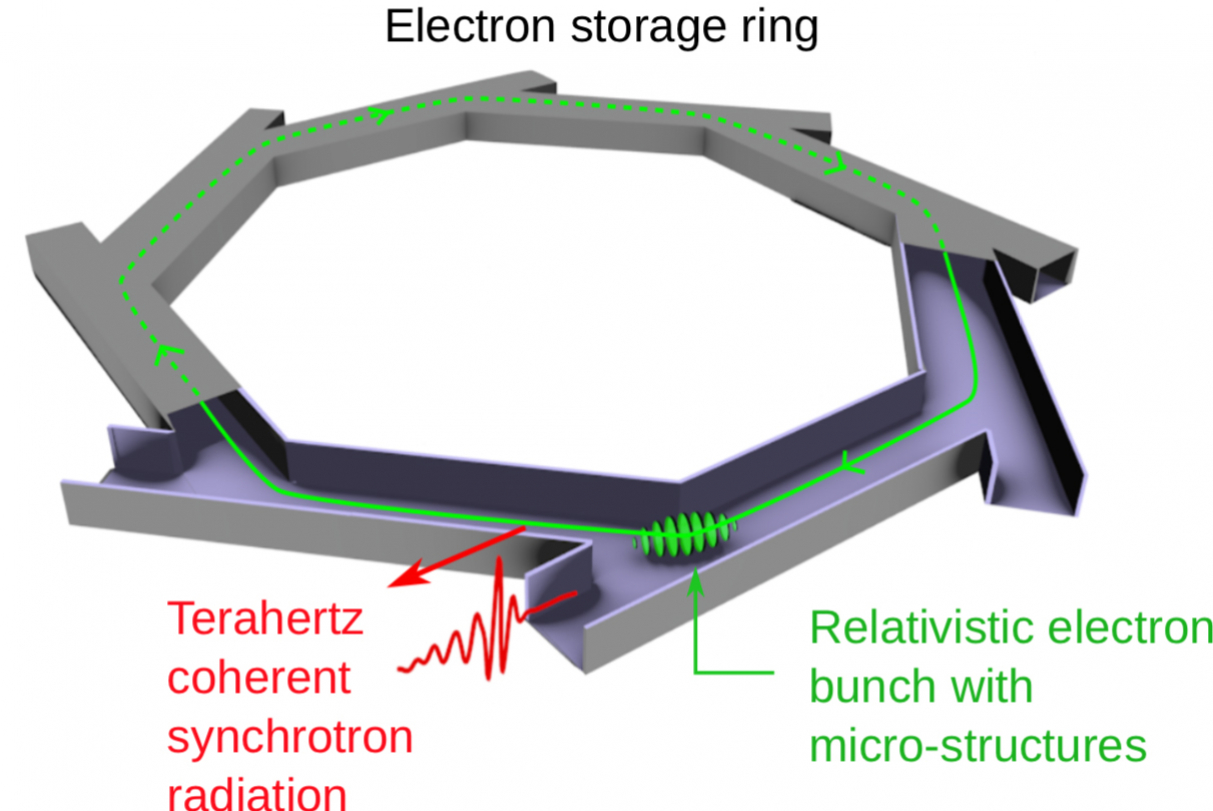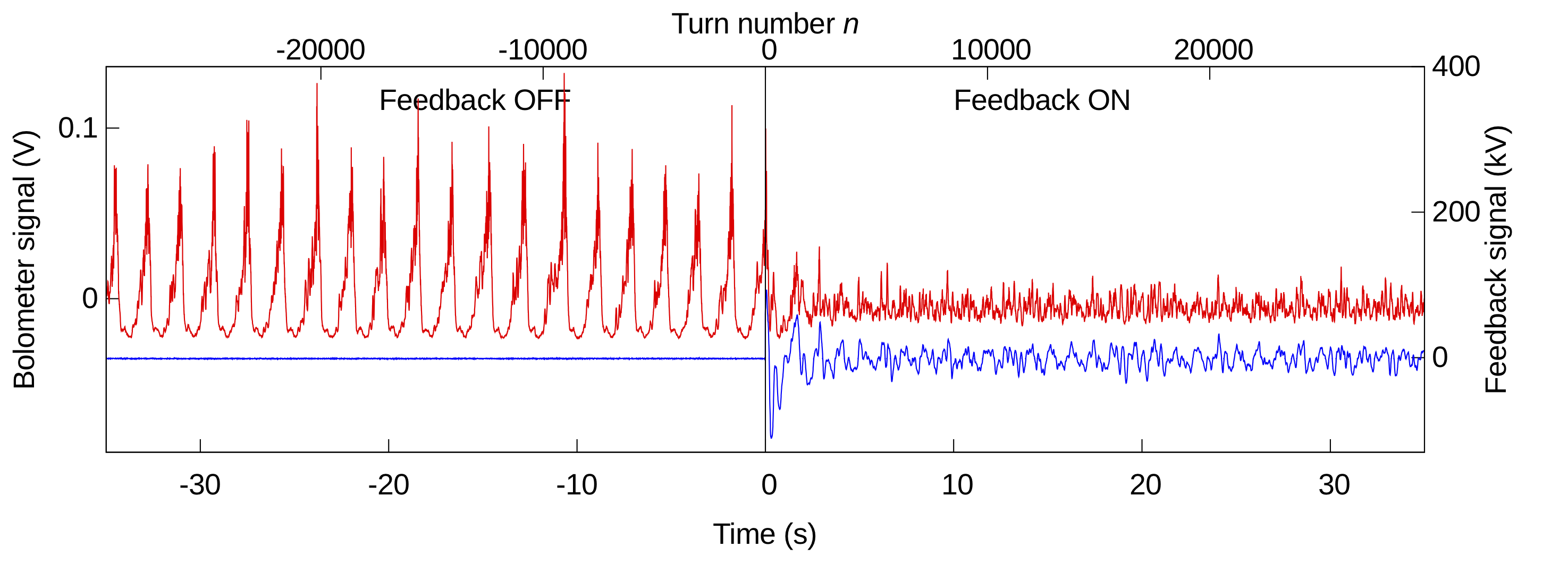Relativistic electron-bunches producing the light in synchrotron radiation facilities are complex media. In particular, when the bunch charge is important, micro-structures appear spontaneously inside the bunches, leading to the emission of a strong coherent radiation in the terahertz range. However, these micro-structures generally appear in a very irregular way, and the strong coherent emission is not generally suitable for users. A collaboration between the PhLAM laboratory and the synchrotron SOLEIL demonstrated that techniques inspired from “chaos control” can be used for suppressing the instabilities. This stabilization of SOLEIL electron beam is the first step of a project aiming at a new source of intense Terahertz radiation for users.
When the number of electrons in a bunch exceeds a threshold value (around a current value of 8 mA at SOLEIL), micro-structures spontaneously appear and propagate in the longitudinal profile of the bunch. This so-called micro-bunching instability is a consequence of the interaction of the electrons with their own radiation. This phenomena have been observed and studied since about twenty years in numerous storage rings worldwide. As an important consequence of the presence of the micro-structures in the bunch, the synchrotron radiation is longitudinally coherent at the micro-structure wavelengths, generally in the terahertz frequency domain. It permits to have huge gain factor compared to classical incoherent synchrotron radiation, typically 103-105. However, since the micro-structures usually appear in an irregular manner (by bursts, cf. Fig. 2 for t<0), this strong coherent radiation cannot be used for applications. It exists a special mode of the configuration of the storage ring, the so-called low-alpha mode, for which the fluctuations of the terahertz can be significantly decreased. But in this mode, the current per bunch is very low, and its use is limited (at SOLEIL, few days/year).

Figure 1: Emission of a terahertz coherent pulse by an electron-bunch with micro-structures. The collaboration between the PhLAM laboratory and SOLEIL has shown that methods inspired from control of chaos techniques permit to control this emission process during the micro-bunching instability.
The collaboration between the PhLAM laboratory and the synchrotron SOLEIL has demonstrated the possibility to have a regular coherent terahertz emission, in the usual configuration of the storage ring. The method, inspired by “control of chaos” techniques, consists in stabilizing an unstable state thanks to a feedback loop. Here, the targeted unstable state corresponds to a regular dynamics of the electrons during the micro-bunching instability; that is a state in which the micro-structures appear and propagate in the bunch in a very regular way. The feedback loop is realized thanks to variation of an RF cavity amplitude in the ring (which acts on the bunch length), according to a feedback signal calculated in function of the terahertz coherent power (which indicates ‘how strong’ are the micro-structures and which is measured on the AILES beamline). The proof-of-principle experiment has permit to obtain a reduction up to 40 dB of some frequencies of the terahertz signal. The stabilization process is efficient down to a current of 9.15 mA. Moreover, since the controlled state pre-exists in the system, only tiny modifications are necessary to maintain the stabilization. This well-known property in the control of chaos community is a big advantage in accelerator-based sources, where strong RF signals are used and cannot be easily modified over large amplitudes. In the experiment, only a modification of 0.3% of the slope of the RF signal seen by the electrons is necessary.
These results pave the way toward strong terahertz sources on storage rings in standard configuration. Next challenges are the extension of the control to higher current.

Figure 2 : Signal térahertz (rouge) et de rétro-action (bleu), avant et après l’application de la boucle de rétro-action (à t=0). Sans boucle de rétro-action, l’émission térahertz est sous forme de bouffée, qui sont supprimées lors de l’application de la boucle.
